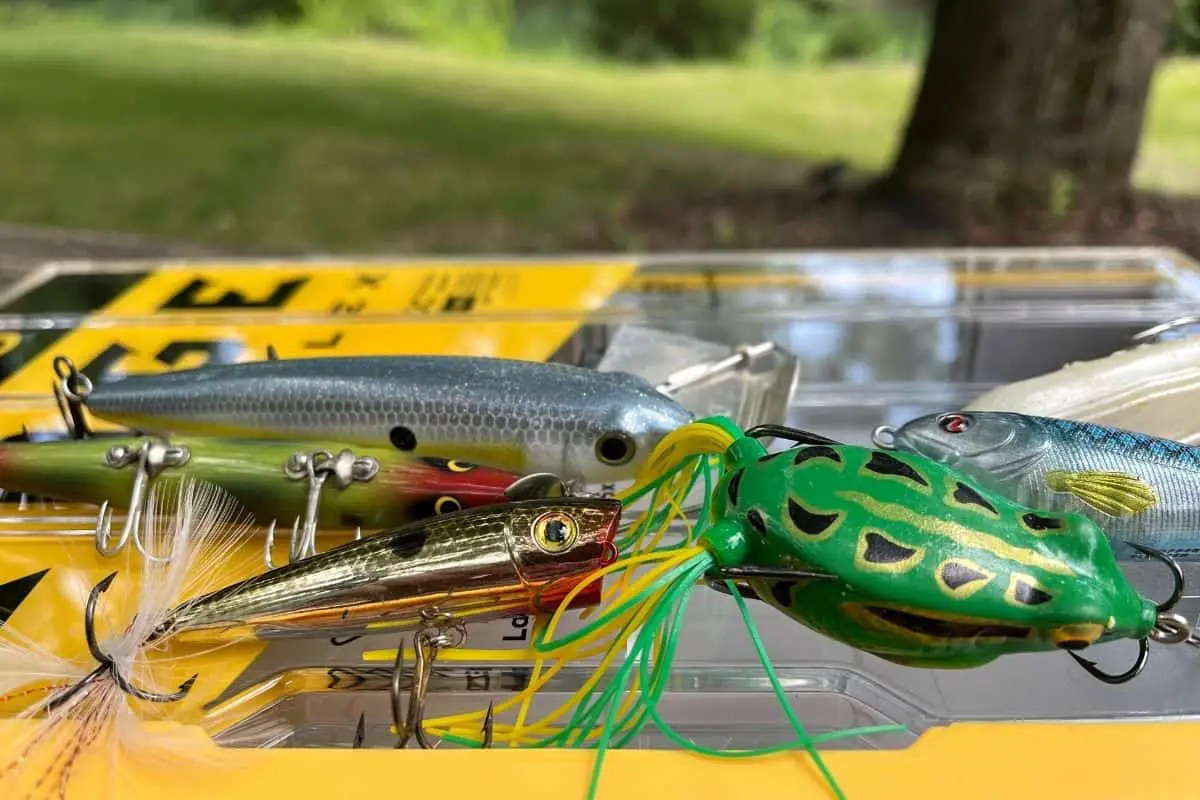Topwater fishing is the most exciting and visually stimulating way to fish for bass. The choices for anglers are vast and understanding the characteristics and design of each lure makes selecting one much easier.
Topwater lure selection should be based on the following criteria:
- Lure Characteristics
- Wind
- Forage
- Water Clarity
- Fishing Spots vs. Areas
- Surface Clutter
- Vegetation
Let’s break down the different types of topwater lures first.
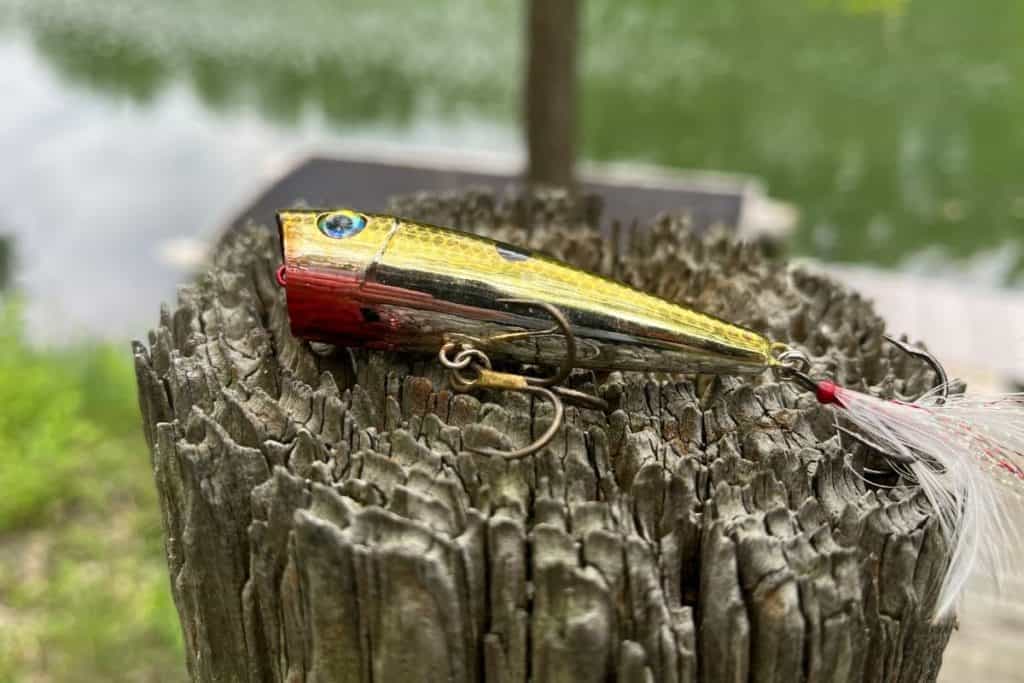
The Topwater Popper
This lure has been around a long, long time and most anglers have used one at some point, yet many folks have yet to fully understand the lure and unlock its true potential.
I like to categorize the popper as a target lure. This bait excels at sitting and creating a commotion with very little horizontal movement needed.
It can be placed right next to a stump, a dock post, along a laydown, on top of bluegill beds, or any other specific target. It does a tremendous job of coaxing bass away from cover because it can literally be dropped right next to anything.
When bass are not aggressive, a topwater lure that moves right by them will seldom draw a strike. When a lure is sitting inches from them for an indefinite amount of time it can be too much for them to handle.
A popper does well in calm water or with some chop on the surface. The diminutive lure can create quite a ruckus even with surface commotion from the wind.
It is also a terrific topwater choice when the forage base is smaller – like minnows, small panfish, or threadfin shad and alewives.
(Here is an article on what triggers bass to bite.)
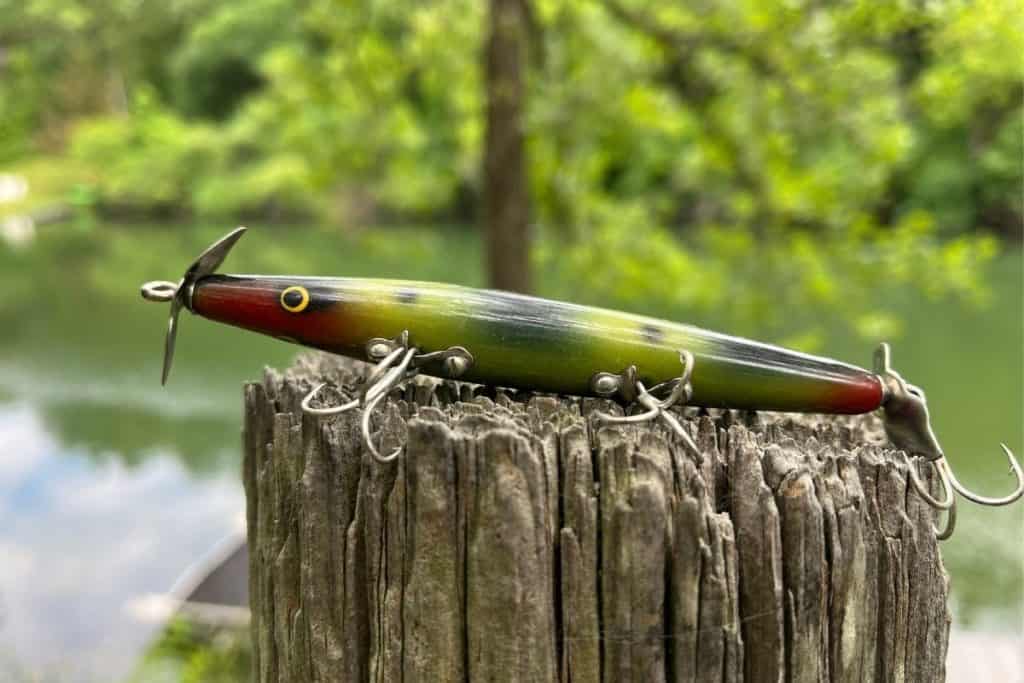
Prop Baits
I like to classify prop baits with almost the same qualities as the popper.
It too can sit and be worked around specific targets. The blades are more subtle than the scooped front of a popper. When the fish are pressured this can make a noticeable difference in the number of strikes you get.
Prop baits come in a wider array of lengths than most poppers and offer anglers an expanded choice when attempting to match forage.
Prop baits also have taken a backseat to more recent topwater lures, so when your home lake is getting obliterated with Whopper Ploppers, a prop bait may just catch fish the others are missing.
The Buzzbait

This is another classic topwater lure that has been around for decades.
It comes in a range of sizes and blade configurations. Buzzbaits can be worked in a subtle manner or with a twitching retrieve that really throws water. This sporadic action can trigger the feeding instincts of bass thinking there are baitfish being chased.
The buzzbait is categorized as a bait that covers water. Stop the lure and it will sink like a rock.
As soon as it hits the water the retrieve must begin to keep the lure on the surface.
One of my favorite features of a buzzbait is the upturned hook.
When the surface of a lake is full of clutter, like in the fall, this topwater classic can come right over the stuff without all the hangups other topwaters have to deal with.
For more pressured waters, top anglers use small buzzbaits to keep the action going.
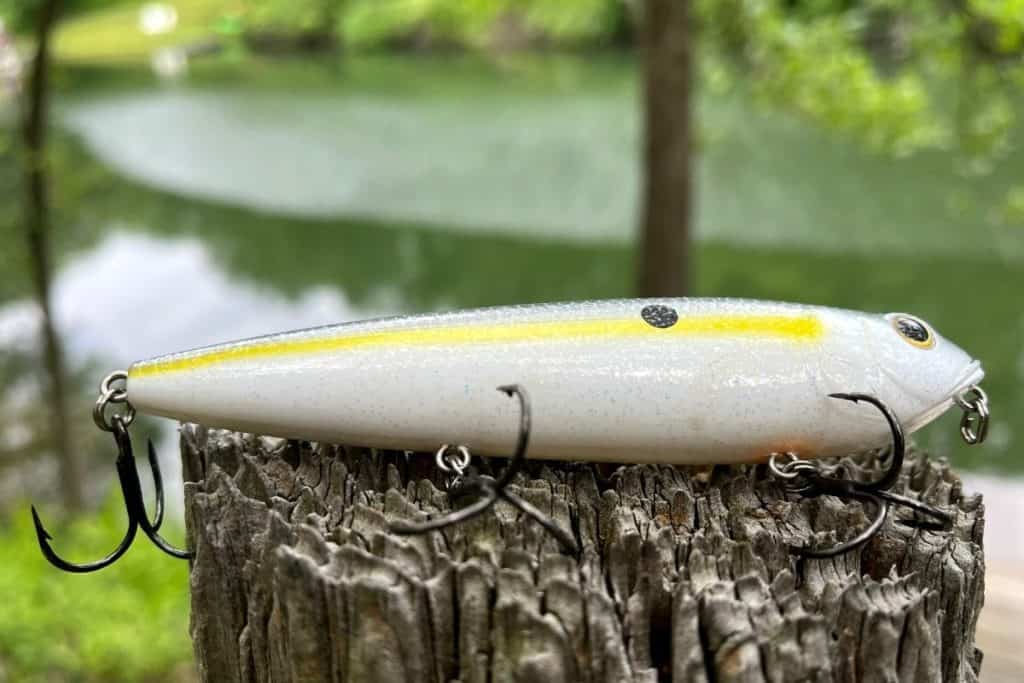
Walking Topwater Baits
This family of topwater lures looks like plastic cigars. Their appearance is rather boring, but the action is mesmerizing.
This family of lures includes such classics as the Zara Spook, the Strike King Sexy Dawg, and the Lucky Craft Sammy.
When worked properly, the lures have a side-to-side sashay that has a distinct calling power. The lure is best used in calm conditions and I prefer to fish it in clear water. I have witnessed smallmouth bass come at full speed from 30ft of water on Bull Shoals Lake to obliterate a walking lure. And this happened in the middle of the day.
| Model | Length in Inches | Weight in Ounces |
| Sexy Dawg Jr. | 3.75″ | 3/8 |
| Sexy Dawg | 4.5″ | 5/8 |
| Mega Dawg | 6″ | 2 |
Walking baits are excellent search baits and do a tremendous job of covering water.
Most manufacturers offer these lures in a variety of sizes that can match the mood or the forage of the waters you are fishing.
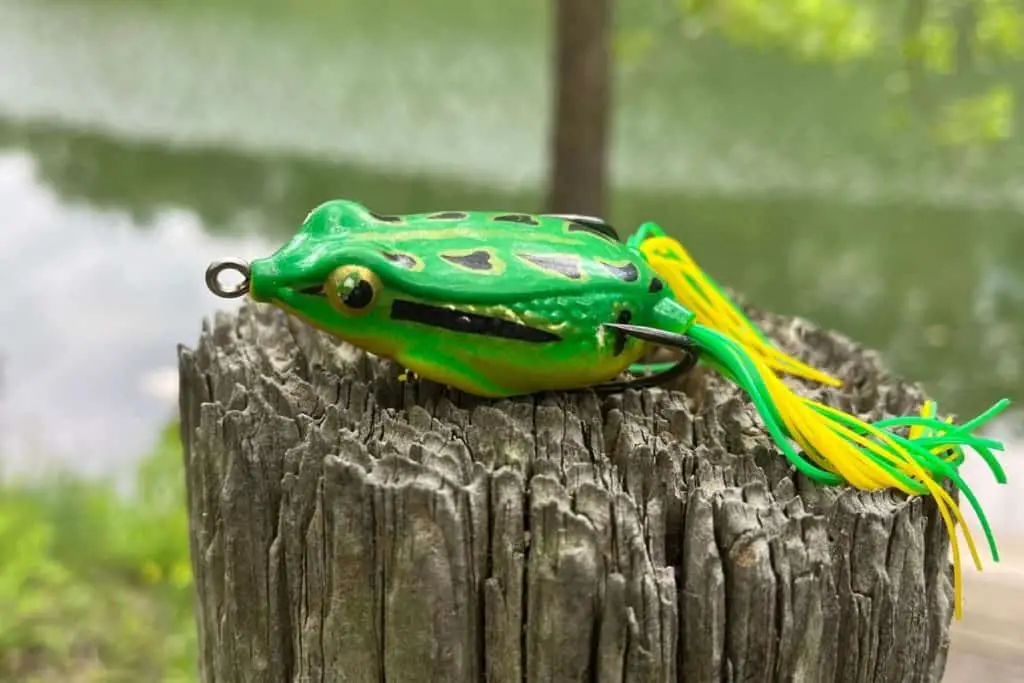
The Hollow-Body Frog
This topwater lure is perfect for fishing areas that have thick, emergent vegetation.
The design and weedless component of hollow-body frogs allows anglers to throw them a long-distance and drag them through the most daunting surface vegetation.
In the northern part of the country, where late summer weeds pile up and pad fields are endless, there is a dedicated contingent of frog anglers. These skilled enthusiasts can draw some of the most exhilarating strikes.
For anglers learning to skip lures, the hollow-body frog is probably the easiest to practice with.
This venerable topwater also does well fished in a similar manner to a popper along specific targets like laydowns and isolated weeds.
(Here is an article that goes into more detail on frog fishing.)
The Whopper Plopper
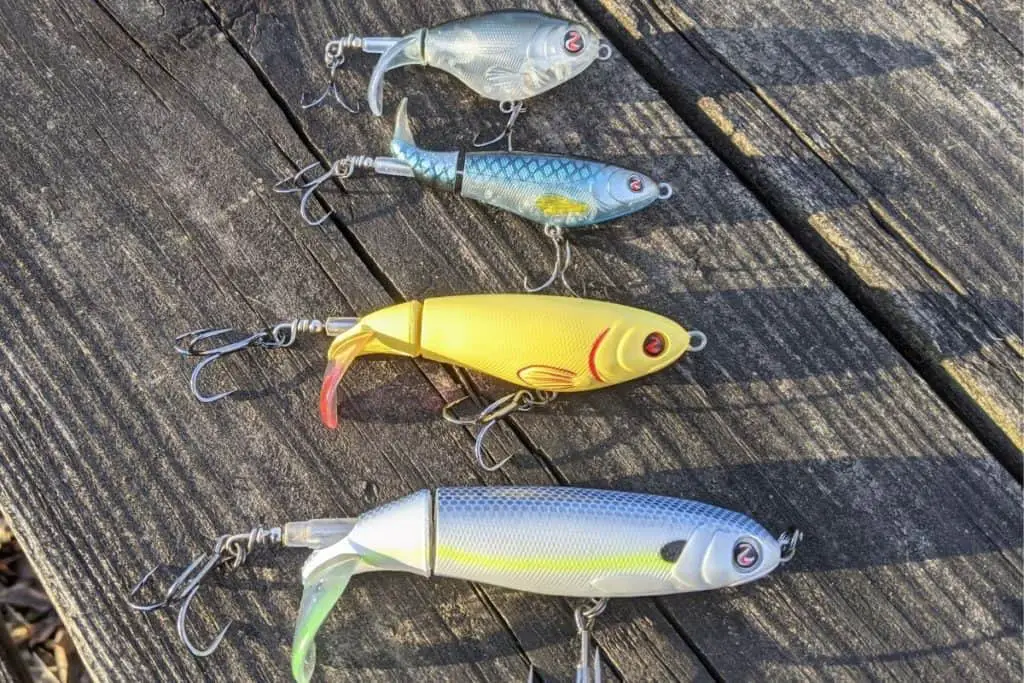
This topwater lure really deserves its own category because of its unique design. While it could be argued it is a prop bait, that sole classification doesn’t do it justice
The blade is positioned on the back third of the body and rotates around the lure.
This topwater took the world by storm a few years ago. It seemed that everyone was throwing a Whopper Plopper.
As a result, other companies have made their own versions of this lure.
The Whopper Plopper has a very distinct and unique sound. It comes in a range of sizes that match perfectly for a variety of wind conditions. Smaller sizes do well in calm water and the large 190 series can create quite a ruckus even with chop on the surface of the lake.
| Model | Length in Inches | Weight in Ounces |
| 60 | 2 3/8″ | 1/4 oz |
| 75 | 3″ | 3/5 oz |
| 90 | 3 1/2″ | 1/2 oz |
| 110 | 4 3/8″ | 1 oz |
| 130 | 5″ | 1 3/8 oz |
| 190 | 7 1/2″ | 2 3/4 oz |
The only downside is that your home waters may be overrun with anglers using the Whopper Plopper and the bass may or may not be conditioned to it.
Wind Conditions and Topwater Choice
When we think of topwater fishing, the first image that often pops into our mind is one of glass-smooth water and big blowups.
Topwaters during calm conditions work well and are a blast, but if anglers limit themselves to only fishing topwaters when there is no wind they are missing out.
Selecting the right topwater for days with a little wind is key.
As mentioned earlier, a walking topwater is almost too subtle unless you are fishing a giant version like the Strike King Mega Dawg.
The lure needs to create enough surface disturbance that the bass will notice it amongst the chop.
Believe it or not, a popper can call fish up when there is a slight chop on the water. This is especially true for the larger versions. Give the surface lure a substantial pop with a hard downward stroke of the rod tip and be ready for some action.
The other lure I like to use when there is some wind rippling the water is either a buzzbait with big blades or one of the larger Whopper Ploppers.
Both work well.
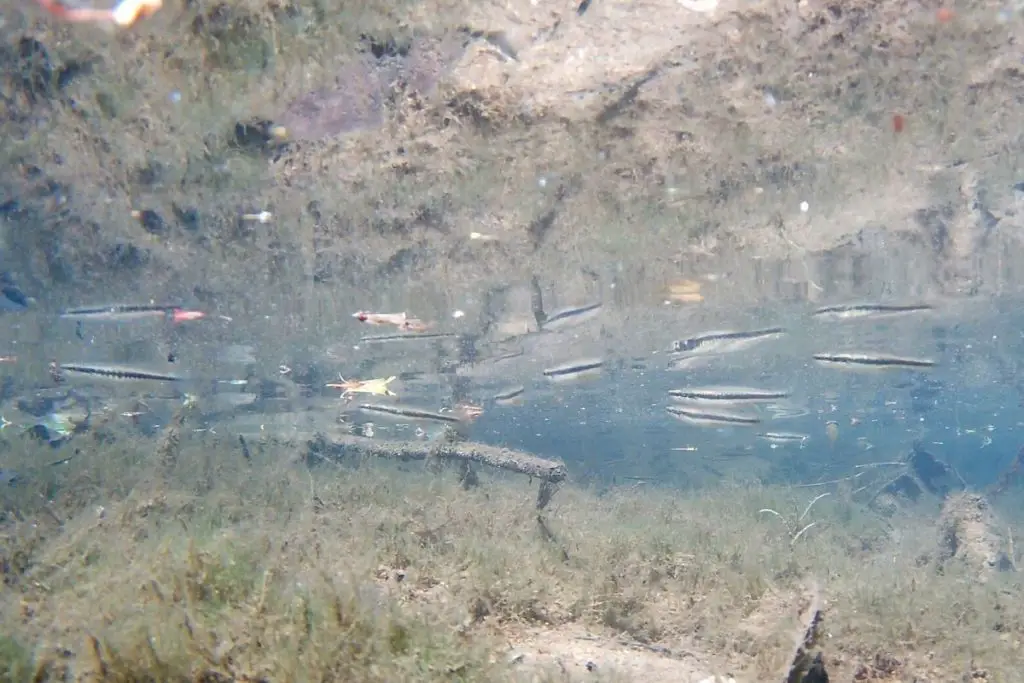
Forage Base and Topwater Selection
If you are fishing one of the many impoundments around the country, then there is a good chance your waters have either threadfin shad or gizzard shad. Maybe even both.
Threadfin are much smaller than gizzard shad and good topwater choices will be in that 3”-5” range.
If the bass are keyed on the big gizzard shad, then using larger topwaters is a smart idea. Using large topwaters will definitely target big bass, but the trade-off is that usually, the number of bites drops.
My home waters have neither shad species.
We have lots of fathead minnows and panfish. Once again, that 3”-5” topwater length works well.
As far as color selection, it is hard to beat the shad/minnow color patterns. These work all the time.
I also like to use panfish colors as well if that is the predominant forage. For example, during the bluegill spawn, many of the panfish are very dark in coloration. Using topwaters that are similar in pattern and hue will help convince those big bass it is a meal worth chasing.
Topwater Choice Based on Water Clarity
If the water you are fishing is dirty and has a very heavy stain to it, then the majority of the bass will be shallow and around hard cover.
Using topwaters that can sit near specific targets is always my first choice in this situation. Popper and prop baits are excellent lures for this.
If the dirty water is absent of lots of laydowns and weedbeds, then I will switch to a topwater that covers water and try to locate fish.
In clear water, the bass have a couple of options. There will always be a population of fish shallow, especially during lowlight periods, but many bass will go deeper.
The light penetration will drive them down to the depths.
One of my favorite lures for calling both largemouth and smallmouth from deep, clear water lakes is the walking lure. As I mentioned earlier in this article, I’ve witnessed smallmouth shoot from the depths like a torpedo and attack the steady walking cadence with extreme attitude.
It is a blast to watch the bass come to attack the lure from the depth.
The other option when fishing clear water lakes is to target areas of shade. As the sun climbs in the sky, these areas get smaller and smaller. This is when switching to target-oriented topwaters is a good move.
Topwater Choice Based on Fishing Spots or Areas
We’ve mentioned how poppers, frogs, and prop baits are good target-oriented topwaters.
Walking baits, buzzbaits, and Whopper Ploppers are perfect for searching an area to find bass.
One of the biggest mistakes that bass anglers make is once they catch a fish they will just keep moving along. Bass are rarely alone.
When you catch one, work the area over and switch up lures when the bite stops. It is easy to double or even triple your catch rate.
If possible, have a couple of rods with different topwaters tied on. My suggestion is to have one lure that can hit specific targets and one that covers a lot of water. Working between the two is a solid plan for maximizing your topwater bite.
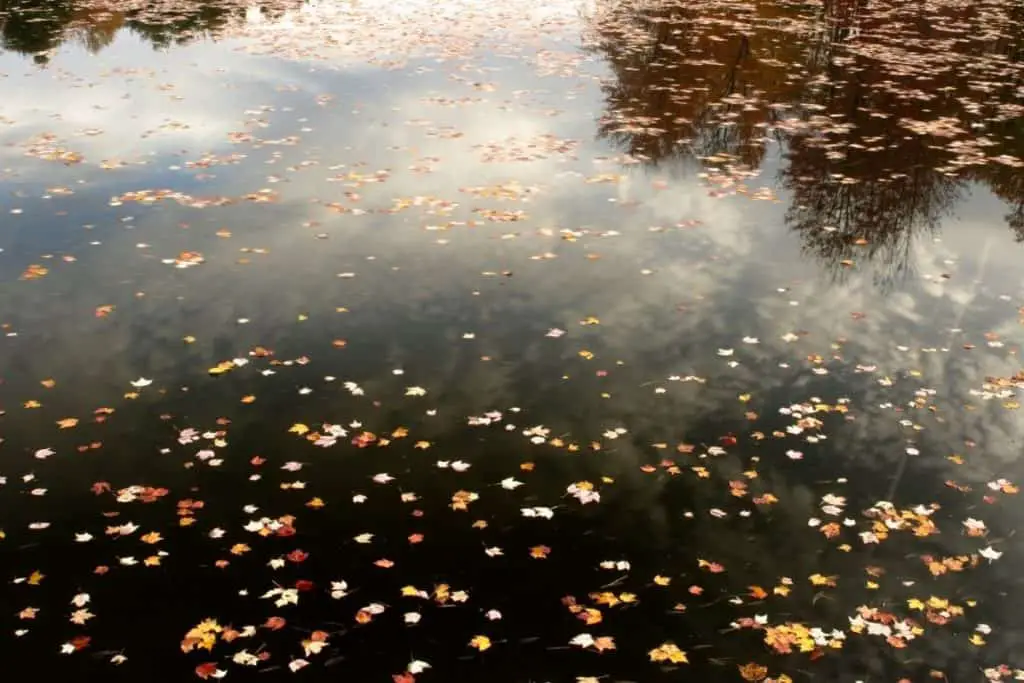
Surface Clutter and Topwater Choice
There are times of the year when the surface of the water is just full of debris. This is even more pronounced when there is no wind.
Around my area, this is most common in the fall. Yes, leaves are annoying, but pine needles are a real nightmare.
When using topwaters that sport treble hooks during this type of situation, be ready for loads of frustration. My top two lures during these conditions are either a buzzbait or a hollow-body frog.
Problem solved.
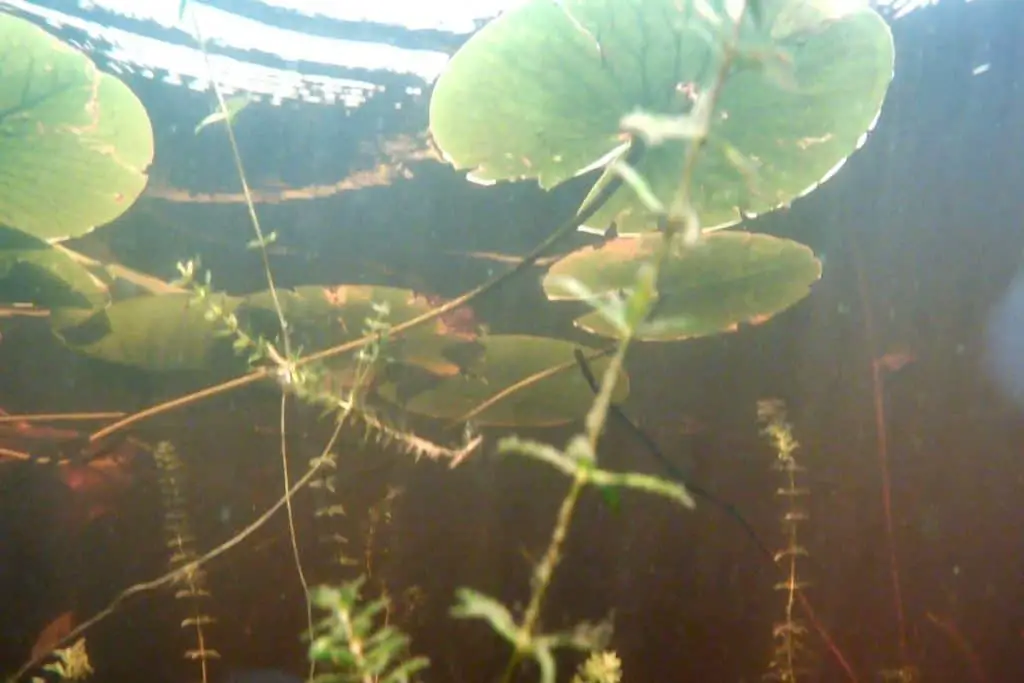
Vegetation and Topwater Lures
Aquatic vegetation can be classified in two ways – emergent and submergent.
When faced with emergent vegetation, anglers are limited to topwater choices. A hollow-body frog is by far the best option and most efficient.
There are other lures on the market that work the same way as the frog. There are hollow-body rats, perch, etc.
Each of these is easy to cast, can be flung a long way, are extremely weedless, and very buoyant. These characteristics make fishing emergent vegetation not only easy but fun.
For submergent vegetation, I will further break it down into two more categories – massive weedbeds and isolated patches.
For the larger, more daunting, weedbeds I like to use the topwaters that cover water. The cast-and-wind options are great for finding where bass are holding at any one time. Check the outside edge, inside edge, and the variations within the weedbed itself.
Submerged vegetation will have points and pockets just like a hard shoreline will. These areas are places where bass like to sit because it is something “different.”
When targeting lone and isolated patches of vegetation a target-oriented topwater is my first choice. Once again, the popper and prop baits are going to get the time on the water.
Always Have a Follow-Up Lure Ready
There are many times when you may appear to be “missing” fish when using a topwater.
Sometimes this is the case, but bass in certain bodies of water have a tendency to slap or stun baitfish first and then swallow them up as they fall through the water column.
I have seen smallmouth do this frequently.
If you feel this is the case, set the topwater rod down and quickly cast out a slow-sinking follow-up lure. My two favorites are a wacky rigged stickbait or a weightless soft jerkbait.
It is exhilarating to watch that line run off with a hyper-aggressive bass on the end.
Good luck out there and be sure to encourage someone today. You never know how you may change their life forever.
Isaiah 6:8

